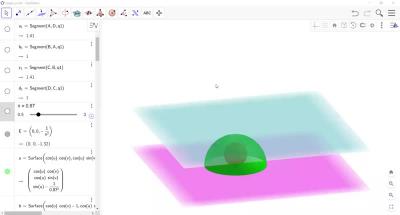Description
Mark and Paupert concocted a general method for producing presentations for arithmetic non-cocompact lattices, \(\Gamma\), in isometry groups of negatively curved symmetric spaces. To get around the difficulty of constructing fundamental domains in spaces of variable curvature, their method invokes a classical theorem of Macbeath applied to a \(\Gamma\)-invariant covering by horoballs of the negatively curved symmetric space upon which \(\Gamma\) acts. This thesis aims to explore the application of their method to the Picard modular groups, PU\((2,1;\mathcal{O}_{d})\), acting on \(\mathbb{H}_{\C}^2\). This document contains the derivations for the group presentations corresponding to \(d=2,11\), which completes the list of presentations for Picard modular groups whose entries lie in Euclidean domains, namely those with \(d=1,2,3,7,11\). There are differences in the method's application when the lattice of interest has multiple cusps. \(d = 5\) is the smallest value of \(d\) for which the corresponding Picard modular group, \(\PU(2,1;\mathcal{O}_5)\), has multiple cusps, and the method variations become apparent when working in this case.
Included in this item (4)

Permanent Link
Load Player

Permanent Link
Load Player
Details
Title
- The Geometry of 1-cusped and 2-cusped Picard Modular Groups
Contributors
Agent
- Polletta, David Michael (Author)
- Paupert, Julien H (Thesis advisor)
- Kotschwar, Brett (Committee member)
- Fishel, Susanna (Committee member)
- Kawski, Matthias (Committee member)
- Childress, Nancy (Committee member)
- Arizona State University (Publisher)
Date Created
The date the item was original created (prior to any relationship with the ASU Digital Repositories.)
2021
Subjects
Collections this item is in
Note
- Partial requirement for: Ph.D., Arizona State University, 2021
- Field of study: Mathematics

